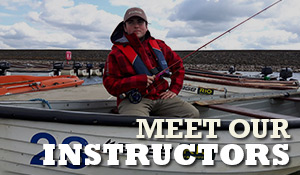After the summer, we now enter the glory days of Autumn for the bank anglers, with the catch returns from the bank all featuring good catches on Shrimps. In the blog I will talk you through how to best approach the banks to get the most out of the bounty of shrimps.
Around 3 years ago we at Draycote discovered we have a population of the highly invasive Demon Shrimp (Dikerogammarus haemobaphes). This shrimp is in the same family genes as the Killer Shrimp from Grafham, but, is a different subspecies. These shrimps have a high production rate and turn over offspring very quickly, resulting in a wide size range. However, the adults are large and typically range from 7-17mm in length but can grow to a massive 21mm. With the summer now behind us and most of the buzzers and sedge already hatched and gone for the year. The trout turn their attention onto the shrimps, the Demon Shrimps favourite substrate to live over is Mussel beds, which there is plenty at Draycote.

These are normally found anywhere there are larger rocks that the mussels can attract too. As a result, Dunn’s Bay, Biggin Bay, The Old Pipe & Swan’s nest in Toft are all firm favourites and hotspots for the shrimps.

The shrimps are free swimming are quite active at this time of year feeding on a variety of fallen debris such as leave, wood and other invertebrates. However, this is also their downfall as the trout can easily intercept them as they move around the rocks and mussel beds. The trout can often be seen feeding like bonefish with their heads down in the rocks and the tails in the air as they hunt for this protein rich invertebrate.
The trout will often close to the banks in order to feed onto the shallow water just over the rocks. So, the best method is to fish for the shrimp feeder from the bank, with no need to wade. A floating line is often the best tactic is often a team of Fulling Mill, Killer Shrimps or a Killer Shrimp on the point and then scruffy Hares Ears on the droppers. The other tactic that works well for the shrimps is to use a midge tip just to bite the flies in and then again, the Fulling Mill shrimp patterns on the cast as the foam back on the flies helps to hold up the patterns.
The leader set up for the team of flies is quite simple a team of 3 with 5ft between the flies. With the tippet as always being 8.5lb RIO Fluoroflex Plus, however, there may be a need to up this 12lb the takes can be savage on the shrimps. When it comes to the retrieve, no retrieve or a very slow figure of eight is best. As while these shrimps are highly mobile, this can also be there downfall. As they can easily get taken by the current and the wind and blown along. Meaning when the flies are fished static or slowly close to the shore, the artificial are imitating the naturals caught in the current. Casting the flies from the bank and then just allowing them to swing around is often the best option. Then when the line gets to a 45° angle from the bank employ a slow figure of eight retrieve to keep the flies off the shallow rocks and imitate the shrimps free swimming over the rocks.
With such an abundance of food around the fish are really in top condition and will really give a fantastic account of themselves.

Check out our online store www.flyfishstore.co.uk for Tom Bird’s Draycote Shrimp Selection to go along with this latest blog.
Tight Lines
Tom Bird
Guiding & Tuition Manager.

